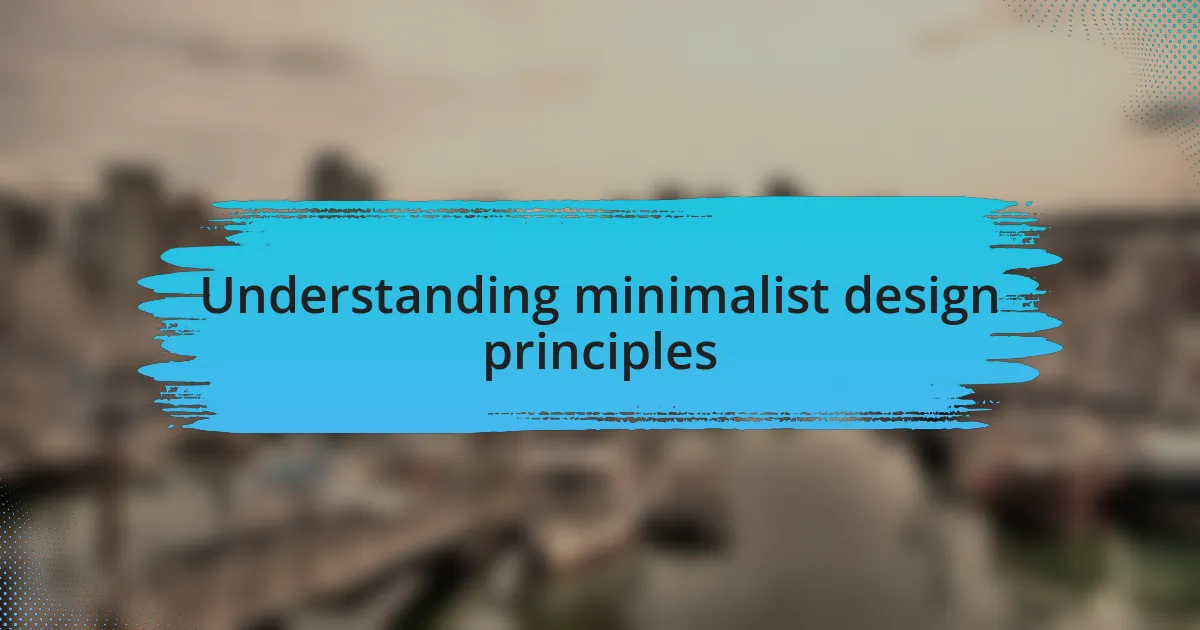Key takeaways:
- Minimalist design emphasizes functionality and simplicity, with each element serving a specific purpose.
- Color and texture are crucial in creating a serene atmosphere and influencing mood in minimalist spaces.
- The principle of “less is more” encourages careful curation of items to enhance elegance and storytelling in design.
- Harmonizing form and function is essential, ensuring that aesthetic appeal and utility coexist seamlessly.

Understanding minimalist design principles
Minimalist design is all about stripping away the unnecessary to highlight what truly matters. I remember the first time I encountered a minimalist yacht interior; it was serene, with clean lines and an open space that made me feel instantly relaxed. Isn’t it fascinating how a simple, uncluttered design can elevate our experience?
At its core, minimalist design principles focus on functionality and simplicity, where every element has a purpose. When I’m curating a space, I often ask myself if an object adds real value or if it’s just noise in the composition. This intentionality not only enhances aesthetics but also creates a more inviting atmosphere.
I’ve found that color and texture play pivotal roles in minimalist design. For instance, a yacht featuring rich wood tones combined with crisp white fabrics can evoke luxury while remaining uncluttered. Have you ever paused to consider how these design elements can influence your mood? It’s intriguing to think how environments we surround ourselves with can evoke feelings of calm or chaos.

Lessons learned from minimalist design
When I first embraced minimalist design, I discovered the power of open spaces. Walking onto a yacht that embodied this approach made me realize how removing clutter can truly amplify luxury. It’s incredible how a well-placed piece of art or an elegant chandelier can be the focal point in an otherwise simple room, isn’t it?
One lesson I’ve taken to heart is that less really is more. I recall redesigning my own space and choosing only a few essential items that spoke to me personally. This experience reinforced the idea that carefully curated selections, rather than an array of decorative objects, can tell a compelling story while maintaining the serene elegance that minimalism offers.
I’ve also learned the importance of harmonizing form and function. For instance, I once marveled at a beautifully designed yacht where the furniture was not only aesthetically pleasing but also incredibly functional. Doesn’t it make you reconsider how we often overlook everyday items in our lives? This balance between beauty and utility, I believe, is the essence of minimalist design, making every element worthwhile.